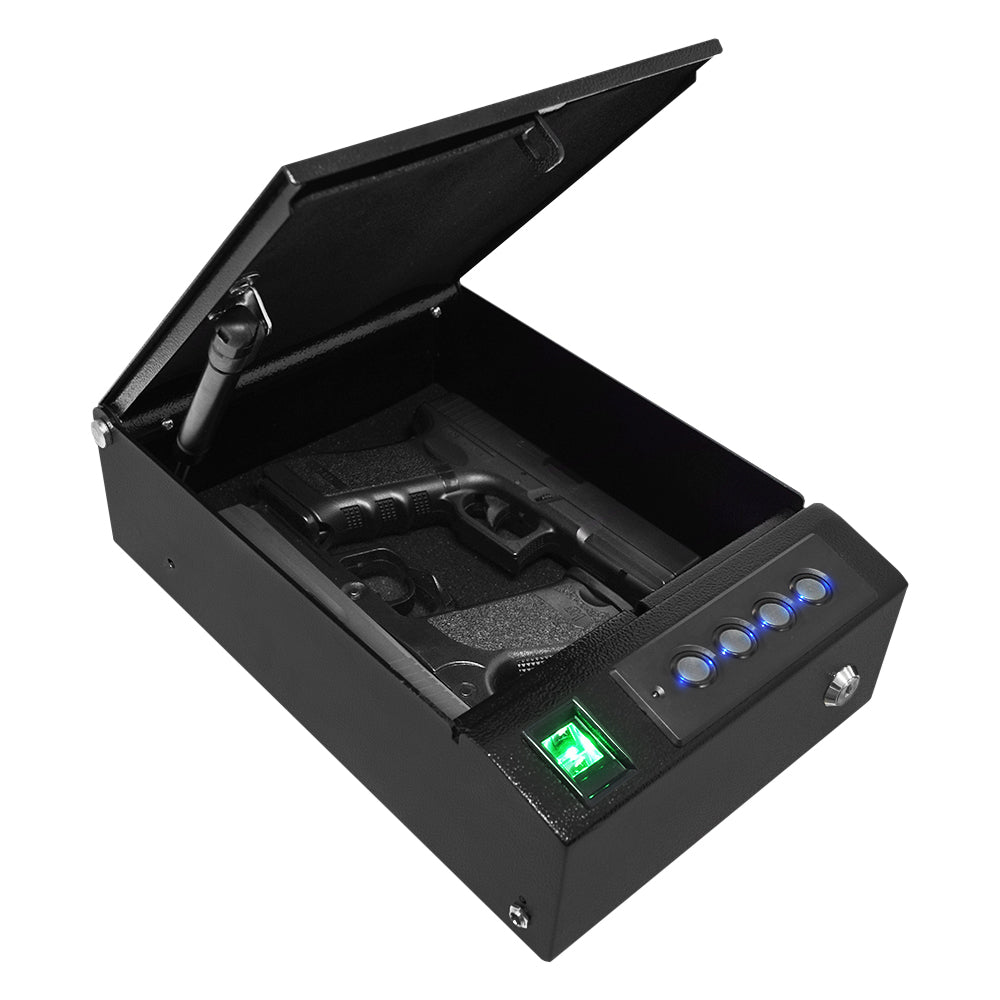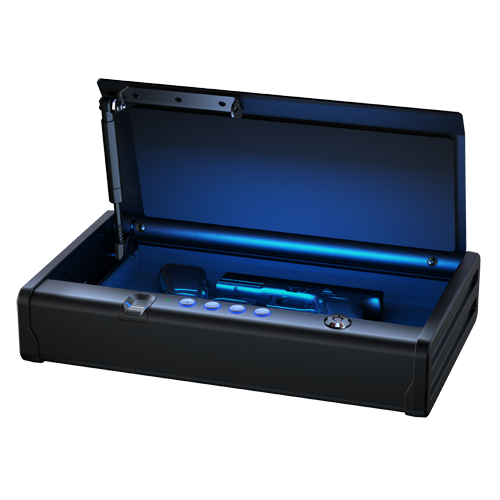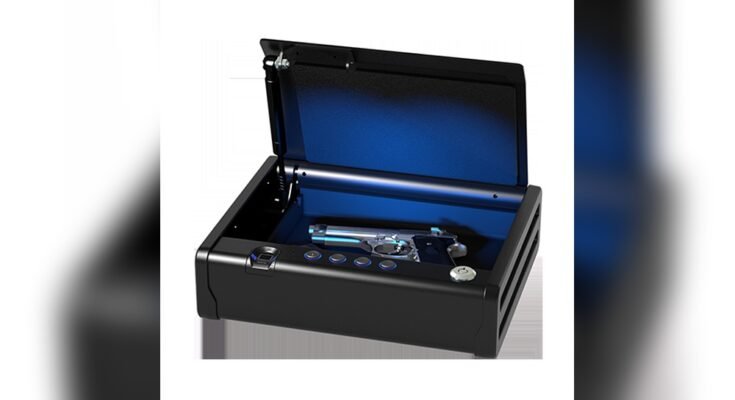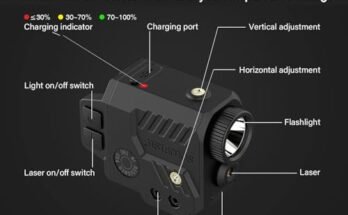Are you worried about keeping your pistol safe but still want quick access when it matters most? You’ve probably heard about biometric pistol safes and wondered if they really deliver on their promise.
Can you trust a fingerprint scanner to protect your firearm from unauthorized use while giving you instant entry? If you’ve ever hesitated to buy one because of doubts about reliability, this article is made for you. Keep reading, and you’ll discover the truth about biometric safes—how they work, their strengths, and what to watch out for—so you can make the best choice for your safety and peace of mind.
Biometric Pistol Safes Basics
Biometric pistol safes use fingerprint technology to secure firearms. They offer quick access while keeping guns out of unauthorized hands.
Understanding how these safes work helps to know their reliability. The basics involve sensors that read fingerprints and electronic locks.
How Biometric Locks Work
Biometric locks scan a fingerprint to verify identity. The safe opens only if the print matches stored data.
Inside the safe, a sensor captures a fingerprint image. The system compares it with saved prints in seconds.
If the match is correct, the lock releases. If not, the safe stays locked to protect the gun.
Types Of Biometric Sensors
Two main types of biometric sensors exist: optical and capacitive.
Optical sensors take a picture of the fingerprint. They use light to capture the print’s details.
Capacitive sensors measure electrical signals from the skin. They map the fingerprint’s ridges and valleys.
Capacitive sensors tend to be more accurate and secure. Both types work fast to grant access.

Security Features
Biometric pistol safes offer advanced security features that protect your firearms. These safes use technology to ensure only authorized users can open them. The security features focus on accuracy, resistance to tampering, and reliable backup options. Each aspect plays a vital role in keeping your pistol safe and secure.
Fingerprint Recognition Accuracy
Fingerprint scanners in biometric safes use precise sensors. They quickly read your fingerprint to allow access. The accuracy reduces false rejections and prevents unauthorized entry. Many models store multiple fingerprints for family use. The technology improves with each scan, making it faster and more reliable.
Anti-tampering Mechanisms
These safes include features that protect against tampering attempts. Some have alarms that trigger if someone tries to force open the safe. Others lock the system temporarily after several failed attempts. The materials used are strong and resistant to physical attacks. These mechanisms deter theft and keep your firearm secure.
Backup Access Options
Biometric safes often come with backup ways to open them. Common options include physical keys or keypad codes. These backups help if the fingerprint scanner fails or the battery dies. Having multiple access methods ensures you can reach your pistol anytime. It adds peace of mind without compromising security.
Reliability Factors
Biometric pistol safes offer quick access and security. Their reliability depends on several key factors. Understanding these helps users trust their safes in urgent moments.
These factors include how the safe handles the environment, power sources, and its build quality. Each plays a role in making sure the safe works well over time.
Environmental Influences
Temperature and humidity affect biometric sensors. Extreme cold or heat can slow the sensor’s response. Moisture can cause rust or damage internal parts. Dust and dirt may block the sensor’s scanner. Placing the safe in clean, dry areas helps it last longer.
Battery Life And Power Issues
Battery power is critical for biometric safes. Weak batteries cause slow or failed scans. Most safes alert users when batteries run low. Using high-quality batteries extends safe operation. Regular battery checks prevent lockouts during emergencies.
Durability And Build Quality
Strong materials protect the safe from damage. Solid steel bodies resist break-ins and impacts. Good quality locks reduce the chance of failure. Proper design keeps electronics safe inside. Durability ensures the safe works well for years.

User Experience
User experience plays a big role in deciding if biometric pistol safes are reliable. These safes need to be quick and simple to use. Every second counts when you need to access your pistol. A good user experience means fewer problems and more trust in the safe.
Ease Of Setup And Use
Most biometric pistol safes come with clear instructions. Setting up the fingerprint scanner is usually easy. Users just follow a few simple steps to register their fingerprints. After setup, opening the safe is quick. Just place your finger on the scanner, and the door opens.
Some models have small screens or buttons for extra options. These features add flexibility but can make the setup slightly longer. Still, basic use remains straightforward and user-friendly.
Response Time
Response time is key for biometric safes. Most models open in less than two seconds. This speed helps users get their pistol fast in emergencies. Delays could cause frustration or worse, slow reaction times.
High-quality fingerprint sensors improve response time. They reduce the chance of errors or failed scans. Fast response builds confidence in the safe’s reliability.
Common User Challenges
Some users face issues with fingerprint scanners. Dirty or wet fingers can cause failed scans. Gloves or cuts on fingers also affect recognition. In such cases, users need a backup method like a key or passcode.
Battery life is another concern. If the battery dies, the safe won’t open. Users should check batteries regularly and keep spares nearby. Overall, knowing these challenges helps users prepare and trust their safes more.
Expert Opinions
Experts offer valuable insights about biometric pistol safes. Their opinions help us understand if these safes provide real security. Both security professionals and firearm owners share their views. These perspectives show the pros and cons clearly.
Security Professionals’ Views
Security experts often praise biometric safes for quick access. They say fingerprint technology reduces the risk of lost keys. Many highlight the importance of quality sensors and software. Some warn that poor models might fail in emergencies. Experts stress regular maintenance to keep safes reliable. They recommend safes with backup access methods like key overrides.
Firearm Owners’ Feedback
Gun owners appreciate the speed of biometric safes during critical moments. Many find the fingerprint scanners user-friendly and fast. Some users report occasional difficulties with wet or dirty fingers. Several mention the importance of testing the safe before trusting it fully. Firearm owners value safes that balance security with ease of use. Overall, they feel confident but advise choosing trusted brands.
Comparing Alternatives
Choosing the right pistol safe matters for safety and ease of use. Different types offer various benefits and drawbacks. Comparing alternatives helps find the best fit for your needs.
Mechanical Pistol Safes
Mechanical safes use physical locks like dials or levers. They do not need batteries or power. This makes them reliable during power failures. Unlocking takes practice and time. Quick access can be harder. Mechanical safes are durable and simple. They suit users who prefer no technology.
Keypad-operated Safes
Keypad safes open with a code entered on buttons. They provide faster access than mechanical ones. Codes can be changed easily for security. Battery power is required, so batteries must be checked. Keypad safes balance convenience and security. They work well for users wanting quick entry without keys.
Traditional Lockboxes
Traditional lockboxes use keys or simple combination locks. They are usually small and portable. Keys can be lost or copied, risking security. Combination locks need memorizing numbers. These safes offer basic protection. They fit users needing low-cost, simple storage solutions.
Choosing The Right Safe
Choosing the right biometric pistol safe is important for keeping your firearm secure. The right safe fits your needs and budget. It should be easy to use and reliable. This section helps you decide what matters most when buying a safe.
Assessing Personal Security Needs
Think about who needs access to the safe. Consider the number of firearms you own. How fast must you open the safe in an emergency? Some safes hold one pistol, others hold multiple guns and valuables. Choose a safe with strong locks and solid construction. Check if the safe can resist tampering or fire.
Budget Considerations
Set a budget before shopping. Biometric safes vary in price, from affordable to high-end. More expensive models often have better technology and build quality. But many mid-range safes offer good security. Avoid very cheap safes, as they might be less reliable. Balance price and features to get good value.
Brand And Model Recommendations
Pick brands known for quality and customer support. Popular brands include Vaultek, GunVault, and Barska. These offer solid biometric safes with quick fingerprint access. Read user reviews to learn about real experiences. Compare models to find one with good battery life and easy setup. Choose a safe that fits your space and use.

Frequently Asked Questions
Are Biometric Pistol Safes More Secure Than Traditional Safes?
Biometric pistol safes offer enhanced security by using fingerprint recognition. They reduce unauthorized access and provide quick entry. Unlike traditional safes, they don’t rely on keys or combinations, which can be lost or guessed. This technology ensures reliable protection for firearms.
How Fast Can I Access My Gun With A Biometric Safe?
Biometric safes allow access within seconds using fingerprint scanning. This quick response time is crucial during emergencies. Most models unlock in 1-3 seconds, providing faster access than traditional locks. Speed and reliability make biometric safes ideal for personal protection.
Can Biometric Pistol Safes Store Multiple Fingerprints?
Yes, most biometric safes can store multiple fingerprints. This feature allows trusted users to access the safe easily. Typically, safes store between 10 to 30 fingerprints, accommodating family members or authorized individuals. It enhances convenience without compromising security.
What Happens If The Biometric Sensor Fails?
Most biometric safes include backup access methods like a key or passcode. This ensures you can open the safe if the fingerprint sensor malfunctions. Regular maintenance and battery checks help prevent failures. Backup options provide peace of mind and reliability.
Conclusion
Biometric pistol safes offer quick access and strong security. They use fingerprint scans to keep your gun safe. These safes reduce the risk of unauthorized use. Some models work better than others, so choose wisely. Regular maintenance helps keep them reliable over time.
They combine convenience with safety for responsible gun owners. Overall, biometric safes provide a good balance of speed and protection. A smart choice for those wanting both safety and ease. Trust your instincts when selecting the right safe.



